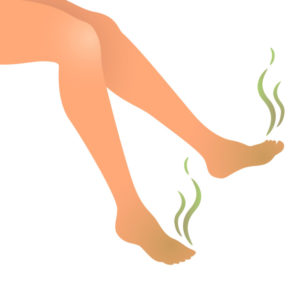 Do you find that your socks and shoes are usually damp when you take them off? If so, you might have a condition known as hyperhidrosis, which is the scientific term for excessive sweating. It is characterized by excessive sweating in the hands, feet, armpit and/or groin region, and while not normally detrimental to your health, it can provide a more promising environment for microorganisms like bacteria and fungus. Today, we’re going to look into the causes of the condition, and what you can do to prevent it.
Do you find that your socks and shoes are usually damp when you take them off? If so, you might have a condition known as hyperhidrosis, which is the scientific term for excessive sweating. It is characterized by excessive sweating in the hands, feet, armpit and/or groin region, and while not normally detrimental to your health, it can provide a more promising environment for microorganisms like bacteria and fungus. Today, we’re going to look into the causes of the condition, and what you can do to prevent it.
Hyperhidrosis Causes and Prevention
Hyperhidrosis is a condition resulting from overactive sweat glands, and while it could be a symptom of a larger hormonal balance, that isn’t always the case. Sometimes we have excessive perspiration due to anxiety, stress, or certain skin conditions. Oftentimes it’s not serious, but it’s still something you should mention to your doctor if you notice that your feet seem to be sweating excessively.
When it comes to preventing excessive foot sweating, there are a number of different techniques you can try, including:
- Using foot powders or sprays to help keep your feet dry.
- Changing your socks and shoes often.
- Wearing looser fitting shoes to aid in heat escape.
- Drying out insoles after use.
- Wearing sandals when appropriate.
- Wear socks designed to remain dry and wick away moisture.
- Shower regularly with anti-bacterial soap.
- Rotate athletic shoes, and dry them out between uses.
Left untreated, the condition can lead to fungal infection’s like athlete’s foot, or it can lead to rash or irritation. If the above techniques don’t solve your problem, talk to a foot specialist. They may have a few other techniques up their sleeve, as recent tests have shown that some people with excessive sweating have found temporary relief with certain Botox injections.
For more information about what to do if you’re suffering from excessive foot sweat, contact Dr. Silverman today!